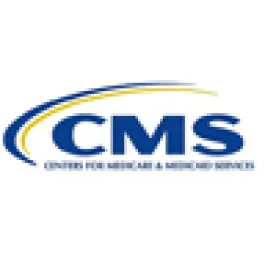Most of the recent focus around the implementation of the Inflation Reduction Act (IRA) by the press and the industry has been on the Medicare Drug Price Negotiation Program and its potential impact on manufacturers. But the Centers for Medicare & Medicaid Services (CMS) has been regularly releasing guidance regarding IRA-related changes that Part D plan sponsors had to implement for 2023 and in future years. CMS recently released guidance (Part One Guidance) on the Maximum Monthly Cap on Cost-Sharing Payments Program or the Medicare Prescription Payment Plan Program (previously referred to as the “OOP Smoothing Program”). The Medicare Prescription Payment Plan Program (the Program) will require Part D plans (PDPs) to make significant operational and system changes to meet its requirements. Many questions remain regarding the Program.
The Program requires PDPs to offer their beneficiaries the option to pay their out-of-pocket (OOP) drug costs through monthly payments over the course of the plan year instead of at the pharmacy point of sale (POS) beginning January 1, 2025. Essentially, once a beneficiary opts into this Program, they will pay $0 at the pharmacy counter for the remainder of the year. The PDP must then send monthly bills to the beneficiary that spreads their copayments out over the plan year. CMS provides the specific formulas to calculate the monthly costs and multiple examples in its Part One Guidance. For Part D beneficiaries who elect to participate in the Program, particularly early in the year, the Program essentially redesigns the Part D plan to be effectively a zero-cost share plan with a higher premium (the Part D premium plus the monthly amount to participate in the Program).
The PDP must also reimburse the network pharmacy the beneficiaries’ OOP amount. A key impact of this Program is that PDPs are now assuming the risk of beneficiaries’ non-payment of copayments, with limited repercussions against the beneficiary. If a beneficiary fails to make monthly payments, the PDP can remove them from participation in the Program following a two-month grace period and prevent the beneficiary from enrolling in the Program for the following year. However, the PDP may not charge late fees or interest and it may not disenroll the beneficiary from the PDP.
Further, PDPs must begin making numerous system and operational updates to meet the billing, marketing, and claims processing requirements necessary to operationalize this Program. Examples of the functionality PDPs must build out over the next year include:
- a mechanism for beneficiaries to opt in to the Program prior to the plan year or at any month during the plan year, including an election option through the plan enrollment process, a paper election option, a toll-free phone number to call to opt-in, and an option to elect participation in the Program through the web;
- systems to allow the PDP to correctly calculate and update monthly caps on a beneficiary’s OOP based on the statutory formulas;
- processes to ensure that beneficiaries are billed the correct amount, not to exceed the maximum monthly cap;
- the ability to create and send billing statements that include the required information;
- different options for beneficiaries to make payments (e.g., electric fund transfer, payments by check);
- claims processing systems that allow the PDP to pay the pharmacy a beneficiary’s OOP costs, net of contributions made by supplemental/primary payors; and
- CMS admits that the claims processing methodology required to coordinate benefits and pay the pharmacy a beneficiary’s OOP is complicated. CMS is currently encouraging PDPs to use a process by which PDPs must submit two transactions with two different Bank Identification Number (BIN)/ Processor Control Number (PCN) combinations to obtain the OOP amount net contributions from primary payors.
- CMS is specifically seeking comments on the claims processing system and methodology.
- processes to address repayment of a beneficiary within 45-days based on retroactive LIS eligibility.
Additionally, PDPs would need to develop outreach and educational material in compliance with the Part One Guidance. This includes undertaking targeted outreach to Part D enrollees “who are likely to benefit from the Program.” Such outreach includes direct outreach to beneficiaries, as well as establishing a mechanism to notify the pharmacy at POS when a beneficiary who is not enrolled in the Program incurs OOP costs and would likely benefit from the Program.
CMS is accepting comments on this Part One Guidance until September 20, 2023. CMS will also release Part Two of the Guidance by early 2024.





 />i
/>i
